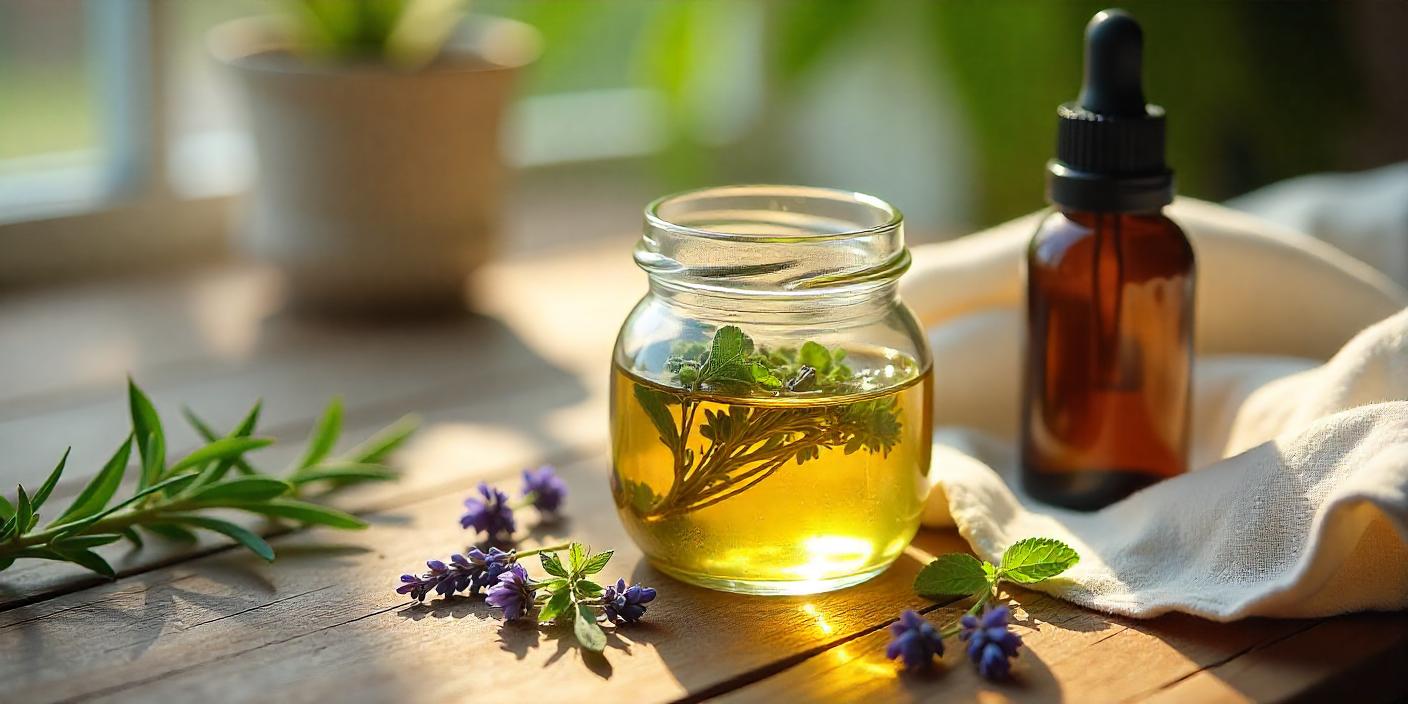
Have you ever wondered how these small bottles of herbal essential oils could have such an impact on one’s well-being? Cheering you up or treating a skin condition, these simple natural oils infiltrate our day-to-day lives. Imagine preparing herbal essential oils in the comfort of your home- your simple working-at-home sort of magic!
This guide will cover everything, from theory to practice, stating how herbal essential oils can be made at home by fervent followers of natural health or just Dyers with an interest in alternative medicine.
What Are Herbal Essential Oils?
Instating the very fundamentals, herbal essential oils are strongly concentrated extracts from plant material; the essence being the aroma and therapeutic properties would have been gained through some sort of steam distillation or perhaps cold-pressing.
An herbal essential oil would stand in contrast to synthetic fragrances in that the former not only beautifies the surroundings but also does not intervene with physical or psychological troubles-Herbal essential oils intervene, to some measure, with ailments, amongst which are headaches, anxiousness, skin texture-related issues, and sleeplessness.
Why Work with Herbal Oils at Home?
Yes, you may buy them in local stores or online; still, here are other reasons for making them yourself:
Quality Control- So you know exactly what goes into your oil.
Cost-Store-bought oils may sometimes seriously drain your wallet.
Customization may choose your combinations as your needs or taste require.
Sustainable- Someone can pick herbs from his/her garden or purchase them from a local market.
Honestly, it feels somewhat dubious to be preparing your herbal remedy.
What Materials Are Needed?
Now, a couple of must-have materials to arrange after the situation:
Fresh or dried herbs (lavender, rosemary, mint, basil, lemon balm, etc.)
A carrier oil: good choices include olive oil, jojoba oil, or sweet almond oil.
Tightly lidded glass container
Cheesecloth or fine mesh strainer
Dark glass bottles for storage
A cool and dry place for infusion.
Optional: If you want the infusion to speed up a little, a double boiler would also do.
How to Make Herbal Essential Oils?
1. Herb Selection
Working with herbs is the fun part! Choose herbs for the use that you want your oil to serve. Here are some good choices for a start:
Lavender- Calming, sleep aid, skin-soothing
Peppermint- Energizing; headaches and congestion relief
Rosemary- Hair growth stimulation, focus-promoting
Chamomile- Anxiety relief; skin soothing
Keep in mind that your herbs must be cleaned and dried to prevent mold growth.
2. Preparing the Jar
Clean glass jar about three-quarters full of herbs. Do not pack tightly; oil needs to be able to flow between every leaf and petal.
3. Add Carrier Oil
Pour in the carrier oil such that the herbs are fully submerged. Then seal tightly and gently shake the jar to mix.
4. Infusion of Oil
is how the herbal oil is extracted from the sun and the heat; this 2 to 6-week-old oil and herbs synergize well. Shake it tenderly every day. Short cut: boil in a double boiler if in a hurry.
Place it over indirect heat in a double boiler for 2-3 hours, strictly warming, not boiling, oil and herbs.
5. Transfer and Store
Once infused, strain the herbs through cheesecloth. Pour it into a dark glass bottle to keep the oil away from light, which destroys the quality of the oil. Those will last up to 6 months in a cool, dark place.
Boom! You have just done your very own batch of herbal essential oils in your kitchen.
Uses of Herbal Essential Oils
So how does one take those wonderful drops of nature? You made it yourself, so use it:
1. Nutrition of Skin
Just a few drops in your moisturizer or face pack would do. Tea tree and lavender oils are among some of the best herbal essential oils for acne and skin-calming properties.
2- Hair Care
Add some herbal essential oils such as peppermint or rosemary to your shampoo for a stimulating scalp and ultimately benefit for hair growth.
3. Aromatherapy
Add a few drops in your diffuser from which you can get de-stressed or lifted moods, or even sleep better.
4. Massage Oils
Combine with other carrier oils to be used in a relaxing massage, and uses include the likes of lavender and chamomile.
Successful Tips About Essential Oils
Always do a patch test on any new oil before putting it on your skin.
You can use dark glass bottles to extend their shelf life.
Don’t use metal containers, they tend to react with the oils.
Keep your setup clean to prevent contamination.
Personal Account
The first time I sniffed the homemade herbal essential oils, I could smell something different-not just with my skin but also the way my mood was and my body’s degradation in stress. It’s grounding to use a medicine you physically made for yourself.
From lavender and chamomile, I now have a soup of the best delightful sleep blend, a soup of oils for focus, and a soup of oils for menstrual cramps. It’s part of my wellness regimen, not just a hobby.
In a Nutshell
Will herbal inhalers be worth all the effort you’re putting into them? Absolutely. From the effort required to make them to the many ways they will help your body and mind, they make a tiny step toward a more natural lifestyle and reap huge benefits. Consistency is again the name of the game. Properly wash up tools and store oils to guard them against degradation. The rest is to experiment and enjoy the journey.
So why not start today? That one jar paves the way to your use of herbal essential oils.
